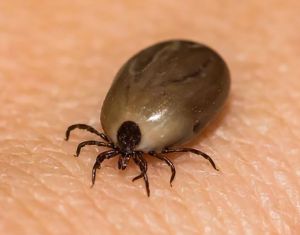What is COPD
Chronic obstructive pulmonary disease (COPD) is a chronic lung disease that gets worse over time. Having COPD makes it hard to breathe. There are two main forms of COPD: Chronic bronchitis, which involves a long-term cough with mucus. Emphysema, which involves damage to the lungs over time.
According to the World Health Organisation 65 million people have moderate to severe chronic obstructive pulmonary disease (COPD). More than 3 million people died of COPD in 2005, which corresponds to 5% of all deaths globally. Most of the information available on COPD prevalence, morbidity and mortality comes from high-income countries. Even in those countries, accurate epidemiologic data on COPD are difficult and expensive to collect. It is known that almost 90% of COPD deaths occur in low- and middle-income countries.
At one time, COPD was more common in men, but because of increased tobacco use among women in high-income countries and the higher risk of exposure to indoor air pollution (such as biomass fuel used for cooking and heating) in low-income countries, the disease now affects men and women almost equally.
In 2002 COPD was the fifth leading cause of death. Total deaths from COPD are projected to increase by more than 30% in the next 10 years unless urgent action is taken to reduce the underlying risk factors, especially tobacco use. Estimates show that COPD becomes in 2030 the third leading cause of death worldwide.
Overview
Lyme disease is caused by four main species of bacteria. Borrelia burgdorferi and Borrelia mayonii cause Lyme disease in the United States, while Borrelia afzelii and Borrelia garinii are the leading causes in Europe and Asia. The most common tick-borne illness in these regions, Lyme disease is transmitted by the bite of an infected black-legged tick, commonly known as a deer tick.

You’re more likely to get Lyme disease if you live or spend time in grassy and heavily wooded areas where ticks carrying Lyme disease thrive. It’s important to take common-sense precautions in tick-infested areas.
Symptoms
The signs and symptoms of Lyme disease vary. They usually appear in stages, but the stages can overlap.
Early signs and symptoms
A small, red bump, similar to the bump of a mosquito bite, often appears at the site of a tick bite or tick removal and resolves over a few days. This normal occurrence doesn’t indicate Lyme disease.
However, these signs and symptoms can occur within a month after you’ve been infected:
- Rash. From three to 30 days after an infected tick bite, an expanding red area might appear that sometimes clears in the center, forming a bull’s-eye pattern. The rash (erythema migrans) expands slowly over days and can spread to 12 inches (30 centimeters) across. It’s typically not itchy or painful but might feel warm to the touch.Erythema migrans is one of the hallmarks of Lyme disease, although not everyone with Lyme disease develops the rash. Some people develop this rash at more than one place on their bodies.
- Other symptoms. Fever, chills, fatigue, body aches, headache, neck stiffness and swollen lymph nodes can accompany the rash.
Later signs and symptoms
If untreated, new signs and symptoms of Lyme infection might appear in the following weeks to months. These include:
- Erythema migrans. The rash may appear on other areas of your body.
- Joint pain. Bouts of severe joint pain and swelling are especially likely to affect your knees, but the pain can shift from one joint to another.
- Neurological problems. Weeks, months or even years after infection, you might develop inflammation of the membranes surrounding your brain (meningitis), temporary paralysis of one side of your face (Bell’s palsy), numbness or weakness in your limbs, and impaired muscle movement.
Less common signs and symptoms
Several weeks after infection, some people develop:
- Heart problems, such as an irregular heartbeat
- Eye inflammation
- Liver inflammation (hepatitis)
- Severe fatigue
When to see a doctor
If you’ve been bitten by a tick and have symptoms
Only a minority of tick bites leads to Lyme disease. The longer the tick remains attached to your skin, the greater your risk of getting the disease. Lyme infection is unlikely if the tick is attached for less than 36 to 48 hours.
If you think you’ve been bitten and have signs and symptoms of Lyme disease — particularly if you live in an area where Lyme disease is prevalent — contact your doctor. Treatment for Lyme disease is more effective if begun early.
See your doctor even if symptoms disappear
Consult your doctor even if signs and symptoms disappear — the absence of symptoms doesn’t mean the disease is gone. Untreated, Lyme disease can spread to other parts of your body for several months to years after infection, causing arthritis and nervous system problems. Ticks can also transmit other illnesses, such as babesiosis and Colorado tick fever.
What Causes COPD
The primary cause of chronic obstructive pulmonary disease (COPD) is tobacco smoke (including second-hand or passive exposure).
In high- and middle-income countries tobacco smoke is the biggest risk factor, meanwhile in low-income countries exposure to indoor air pollution, such as the use of biomass fuels for cooking and heating, is the main cause of COPD.
Almost 3 billion people worldwide use biomass and coal as their main source of energy for cooking, heating, and other household needs. In these communities, indoor air pollution is responsible for a greater fraction of COPD risk than smoking or outdoor air pollution. Biomass fuels used by women for cooking account for the high prevalence of COPD among nonsmoking women in parts of the Middle East, Africa and Asia. Indoor air pollution resulting from the burning of wood and other biomass fuels is estimated to kill two million women and children each year.
Other risk factors for COPD include occupational dusts and chemicals (such as vapours, irritants, and fumes) and frequent lower respiratory infections during childhood.

It is now understood that most forms of COPD/ emphysema result from accelerated ageing, a pathological mechanism also involved in various chronic disease. Genes associated with inflammation are upregulated in COPD sufferers while genes associated with tissue repair are down-regulated. The leucocyte telomere lengths, one of the main ageing markers, are also much lower than average for COPD patients and their lung fibroblasts have impaired ability to restructure collagen.
Benefits of Embryonic Stem Cells for those with COPD
mbryonic stem cells are known to elongate the telomeres and they repair skin fibroblasts as established in our rejuvenation studies. This is why patients who suffer from COPD are able to reverse some or all of their symptoms. The Embryonic stem cell treatment that we offer in combination with specific peptides such as GHK peptide.
During the first week of the COPD treatment, patients notice increased energy, increased capacity to walk. By the end of the 4th week of treatment, most of the COPD patients have significantly better breathing and capacity of movement. Their family also notice changes in their mood, in their desire to plan ahead and live as their impairment lessens. Progress will depend on how severe the condition is as well as whether other organs have degenerated or not.
Each condition is reviewed at the beginning of the treatment and programs are adapted to the needs of each patient. A minimum of 4 weeks is usually recommended in order to see significant changes in the patient’s condition.
To learn more about our protocol or to be directed to an affiliated practitioner, Click the “ask a question” button below.
Contact Stem Cell Health to learn more about innovative stem cell therapy.









